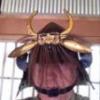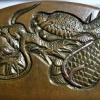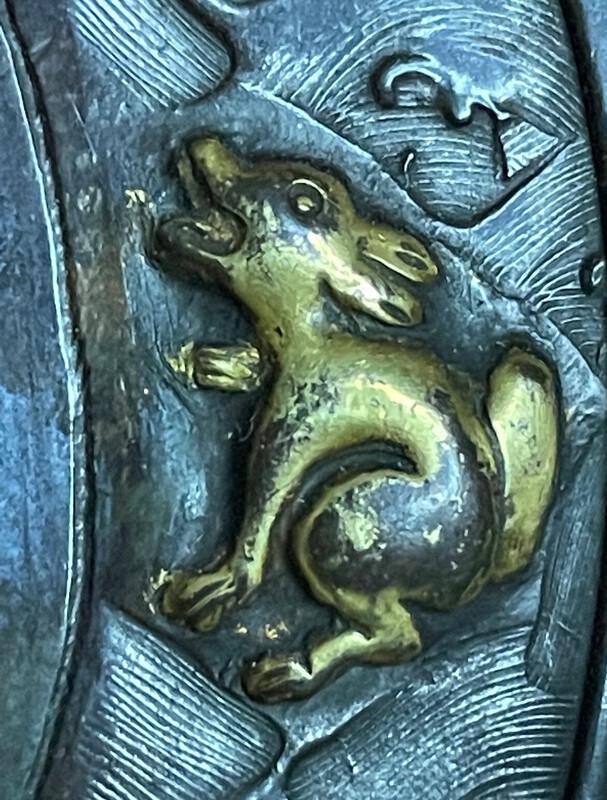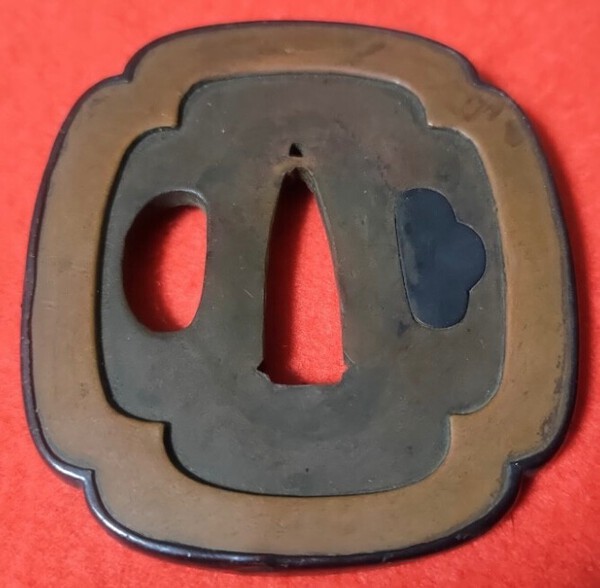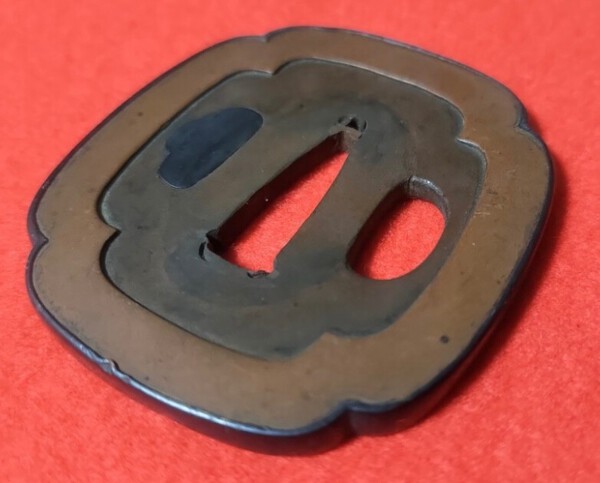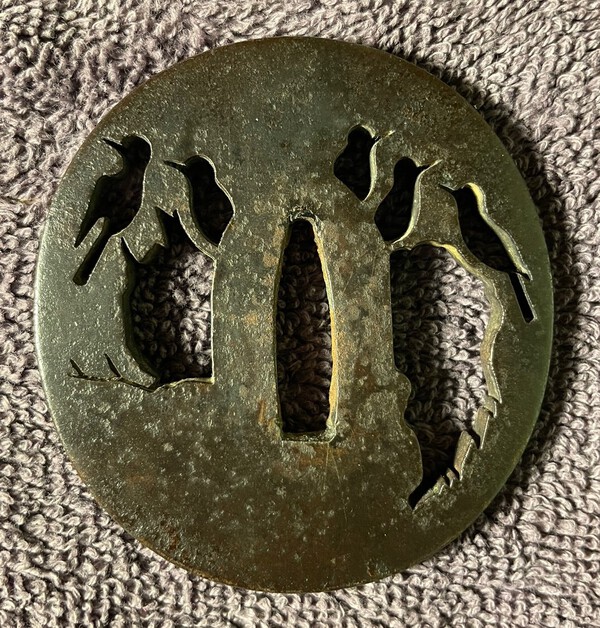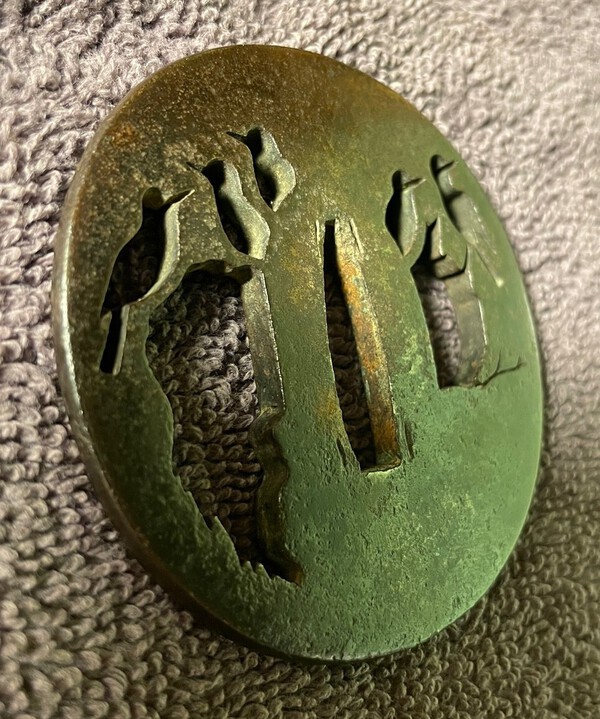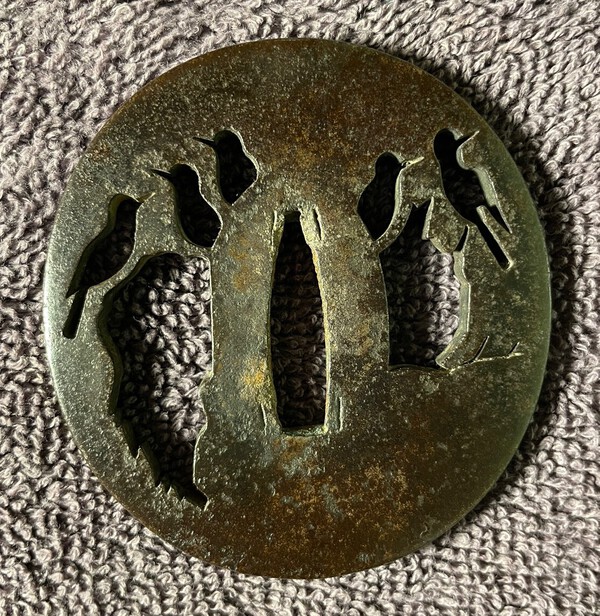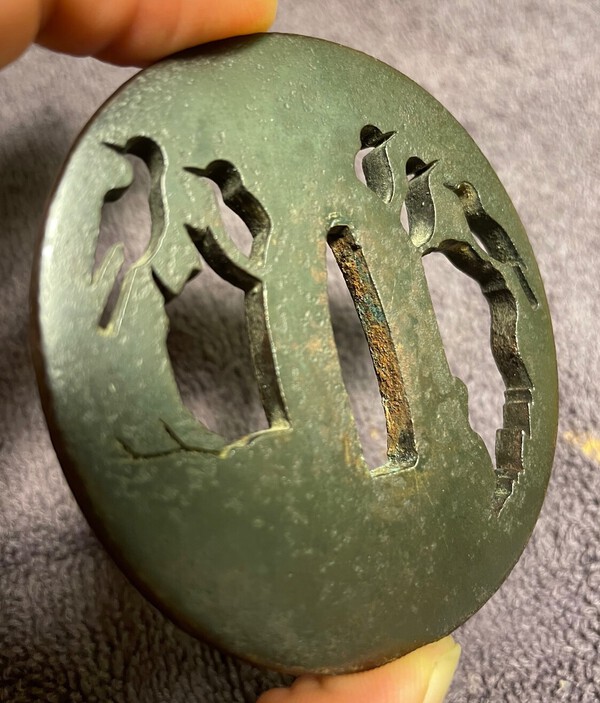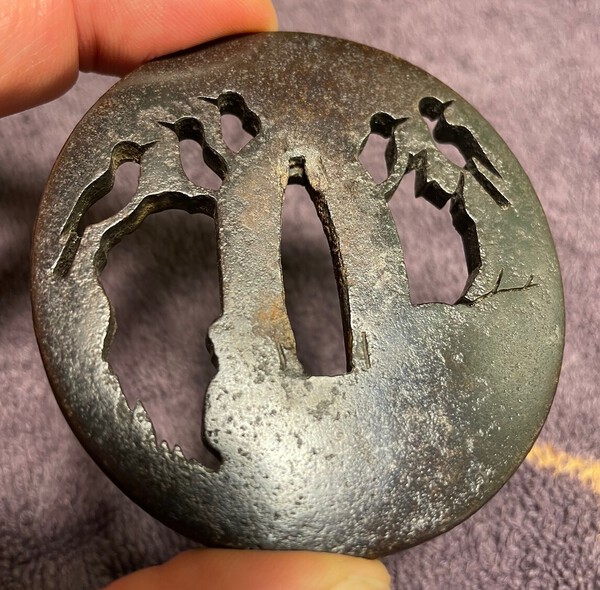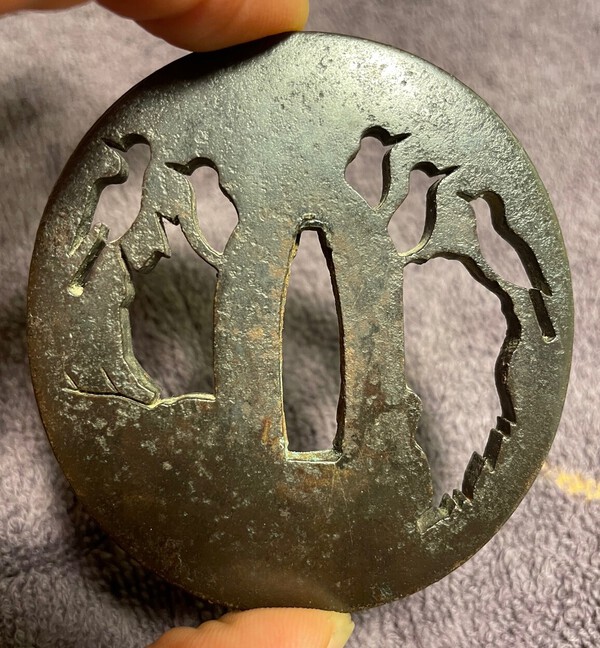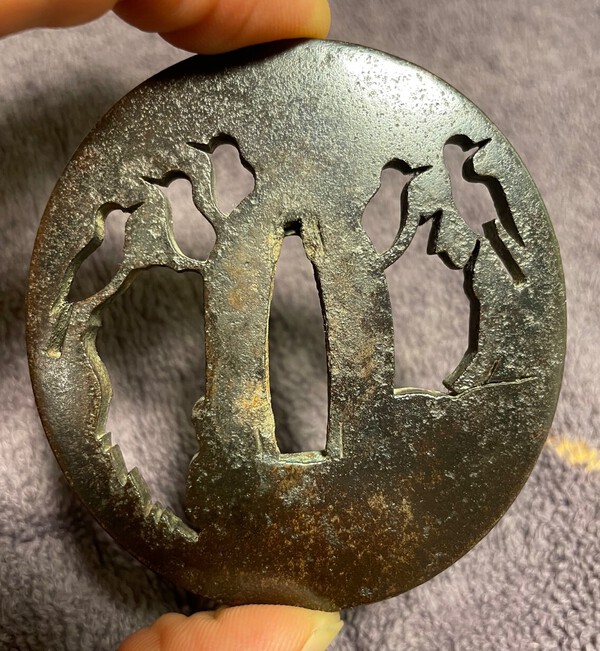-
Posts
1,059 -
Joined
-
Last visited
-
Days Won
2
rematron last won the day on June 16 2023
rematron had the most liked content!
About rematron
- Birthday 10/25/1972
Contact Methods
-
AIM
NA
-
MSN
NA
-
Website URL
NA
-
ICQ
NA
-
Yahoo
NA
-
Jabber
NA
-
Skype
NA
Profile Information
-
Gender
Male
-
Location:
USA, Mountlake Terrace, WA
-
Interests
Embroidery, art, science fiction, Macross, history, invention, technology, exploration, archeology, cats, my wife
Profile Fields
-
Name
Jeremy R
rematron's Achievements
-
Hi Henry, I'm a novice so keep that in mind. From my understanding, when it comes to TSUBA, function is always over form. The material used for traditional TSUBA is always sturdy be it iron based or soft metal and both of these materials were used pre-Edo and throughout Edo. Ko (pre-Edo) TSUBA do tend to be simpler in design but that's not always the case and only one factor in guessing at the age. Many many TSUBA produced in the Edo era were inspired by TSUBA of older eras so the simplicity factor in itself is not a good tell to rely on for dating. The actual design carved (SUKASHI) into your TSUBA can be used to date it as well. Even the thickness of the plate is a tell. A person more knowledgeable than me or an expert would take all factors into account to determine/guess its age. My own observation is that the plate is flat and thick which gives me an Edo vibe.
-
Beautiful stabilization/restoration work!
-
I have noticed this same thing and also thought there were other moderators albeit not as involved as @Brian.
-
Admittedly, I am very new to collecting TOSOGU but I am firmly in the forged camp of this OP TSUBA. What stands out to me is the inside surfaces. They appear to be very smooth and lack the pitting/texture, which I also feel could be purposeful texture if not produced by corrosion and subsequent stabilization and re-patination. I'm remembering another thread from around a year ago where @Ford Hallam had chimed in after I myself had thought a TSUBA was cast because of lack of detail and an overall pitted appearance. He stated that many surface textures were purposeful and pointed out other reasons for believing that particular TSUBA was forged in his opinion. It was a forum lesson I will not soon forget! Anyways, the point I'm trying to make is: wouldn't casting texture/pitting be uniform on all surfaces? The other thing that stands out to me are the crisp 90% angles of the edges. Most examples of cast TSUBA (of the iron-based variety) I have seen on the forum don't have these uniform and predominant sharp edges. What I get from the combination of these two things is that it was forged and chased/carved. Obviously, I could be wrong about these observations and I'm open to learn like most people on this great forum.
-
If I had extra money for it, I would buy it in a heartbeat. I really like that one.
-
-
Jacob, if you are confident of its origin and won't take any other opinions, why are you on this forum asking questions? We've all seen this attitude before. All the hallmarks of a troll.
-
Geraint, hahaha. Oops! I saw the red color of the 16" mark and immediately thought that was the 12" mark... Duh. I guess the seemingly short TSUKA added to the optical illusion. That's a tad embarrassing. Yes, totally KATANA.
-
Hi Thomas, Without being able to see a whole lot of detail in your photographs, what I do see tells me it's a real antique NIHONTO. It is a WAKIZASHI (short sword). The TSUKA (handle) has quite a bit of age to it. edit: This is a KATANA. I completely misread the tape measure. I am a total novice so I can't speak much more than that. You will surely get more replies from seasoned members. They will want some other photographs. At least one with the TSUKA and HABAKI (blade collar) removed and then photographed with the tip of the sword up in as good as light as possible. And if you can get any detailed/focused images of the edge that would be helpful as well. There will be a pin (MEKUGI) going through the handle, and typically visible on both sides. Remove that with a widdled down chopstick or something else of similar diameter and not hard as to do any damage. Be careful not to cut yourself. Japanese swords stay sharp for a very long time. What we really need to see is the NAKAGO (naked blade handle). The patina and style of that will possibly give us a better hint of age and school. Best, Jeremy
-
In line with the above comments, I also observe that the TSUKA (handle) wrapping is not up to par with a traditional NIHONTO. Not solid proof but more evidence.
-
I do see all four appendages present on the left-hand dragon, but that one almost hidden appendage only has two claws instead of three which throws off the image. I agree that the curves overall are more angular and not as flowing and natural as the one on the right. Also, the curvature of the front section of the body flows into the rear leg instead of the body and is askew from the rear part of the body. This shows a lack of planning. While the dragon on the right does have spines, they aren't very uniform and proportionate to where they are located on the dragon, giving it a sort of sloppy appearance even though it as meant as a detail. Finally, I observe that the snout and lower jaw are better executed on the right-hand dragon in that the snout is longer than the lower jaw and more visible than the left-hand dragon. The lower jaw is longer than the snout on the left-hand dragon and the snout is hardly visible. With the head being a major part of the awesomeness of a dragon, the execution of the tiny and misshaped head on the left-hand dragon leaves me dissatisfied and gives me the impression again of bad planning.
-
I second Steve's recommendation of Nikko. It's an absolutely beautiful place and you can use that as a base for a day trip to Nikko National Park if you want a break from the hustle and bustle. It's serene and picturesque. I don't know how common it is throughout the year but I was there in late December and saw snow monkeys hanging out in hot springs on my bus ride to the park. I also agree that Kyoto is a great base camp for visiting nearby attractions like Himeji and Nara.
-
Hi Dan. Boy, I’m glad you said something! Honestly, I had no idea about the corrosive effect that oak has on iron. I did a little research after reading your question and now I’ve learned something new. Thank you for saving me (or rather my TSUBA) from my ignorance! I don’t plan on finishing the wood but, in light of your eduction, I will add felt washers (or some other material) as a backing on all the pegs so that the TSUBA never actually touch the oak. The dowels are poplar which doesn’t seem to be reactive to iron from what I’ve read, so far. Please let me know if that is wrong. Thank you, good sir! Best, Jeremy
-
Thanks, Dale! Hadn't seen this design at all before. I thought they might be crows and thank you for the confirmation. I do like my corvids. Sorry, folks. Back to our regular scheduled programming.
-
Thanks, Dale! I’ve been meaning to post that one actually (not to hijack my own thread). It’s an interesting piece. And now I know they are crows! The TSUBA is magnetic but its finish is unusual compared to all my other ‘iron’ pieces. The finish is very smooth like polished stone. The inside of the NAKAGO-ANA makes me think it might be sandwiched? Here are some better photos for you.




